导航栏
"QAIT" drives urban development through the collaborative integration of diversified businesses. In the communications sector, the company meticulously constructs base stations and signal towers, enhancing network coverage and signal stability through technical means such as scientific site selection and parameter optimization. The network engineering division provides end-to-end services from planning and design to system integration, facilitating enterprises' digital upgrading and the construction of smart city interconnection systems. The urban lighting business combines regional cultural characteristics with energy-saving LED technologies to carry out lighting aesthetic designs for landmark buildings, streets, and scenic areas, rejuvenating the city's nighttime image. With ingenuity, QAIT creates urban foundation projects that stand the test of time, empowering urban modernization from multiple dimensions.
1.Base station construction
(1)Base Stations Overview
A base station is an infrastructure in a mobile communication network. It communicates with mobile terminals such as mobile phones and tablet computers through wireless signals, enabling information transmission between mobile terminals and between mobile terminals and the Internet. A base station is like a bridge, receiving signals from mobile terminals and forwarding them to the core network, while also sending information from the core network to mobile terminals.
(2)Component Parts
Base station main equipment: responsible for processing and transmitting wireless signals, including baseband processing units (BBUs), etc. It encodes, modulates, and processes signals from the core network, sends the processed signals to the radio frequency units, and receives signals from the radio frequency units for decoding, demodulation, and other processing to transmit information to the core network.
Radio frequency unit: including equipment such as radio remote units (RRUs) and antennas. The RRU is mainly responsible for converting baseband signals into radio frequency signals and transmitting them through the antenna, while receiving radio frequency signals sent by mobile terminals and converting them into baseband signals for transmission to the BBU. The antenna is a device for transmitting and receiving wireless signals, and its performance and layout directly affect the coverage and signal quality of the base station.
Transmission equipment: It is used to realize data transmission between the base station and the core network, and common transmission methods include optical fiber, microwave, etc. Through transmission equipment, a large amount of data can be transmitted quickly and stably between the base station and the core network, ensuring that mobile terminals can normally carry out services such as voice calls and internet access.
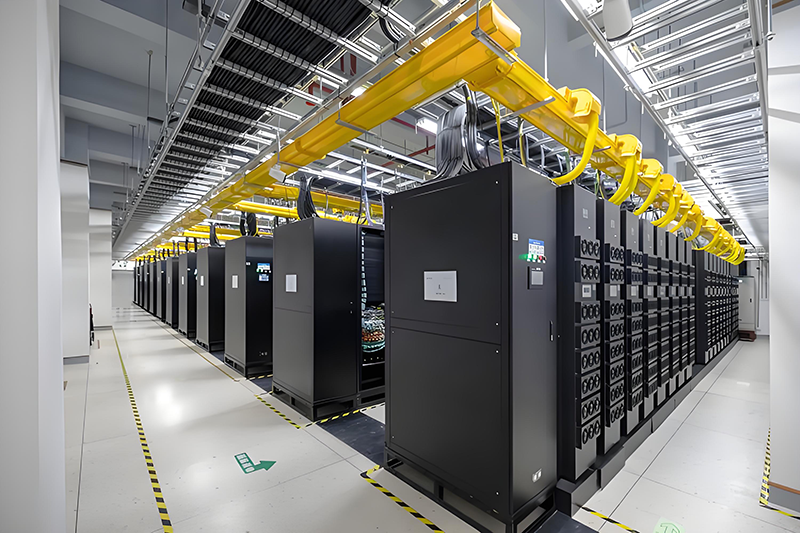
Data Center
Power equipment: It provides power support for various devices of the base station, including AC distribution boxes, switching power supplies, storage batteries, etc. The power equipment should ensure stable and reliable power supply to ensure the continuous and normal operation of the base station. Meanwhile, it also needs to have a certain backup power capacity to cope with sudden situations such as power outages.
(3)Main Types
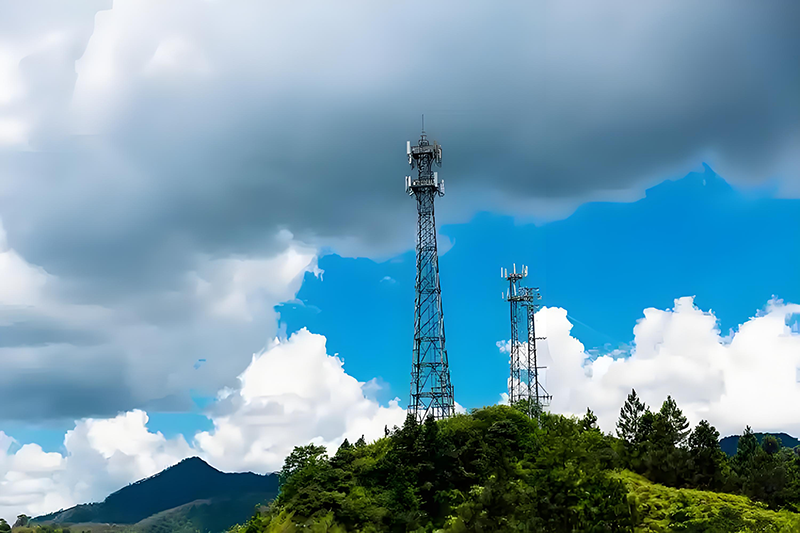
Base station construction
Macro base station: It has a large transmission power and coverage area, and is generally used for coverage in large-area regions such as cities and villages. The antenna of a macro base station is relatively tall, usually more than 30 meters, and can cover an area with a radius of several kilometers, meeting the communication needs of a large number of users.
Micro base station: It has relatively small transmission power and coverage area, and is generally used for covering small-scale hotspot areas indoors or outdoors, such as shopping malls, office buildings, hotels, etc. Micro base stations are small in size and easy to install, and can be flexibly deployed according to specific coverage requirements.
Distributed base station: It is composed of a baseband unit and multiple radio remote units (RRUs). The baseband unit can be centrally placed in a machine room, while the RRUs can be distributed in different locations through transmission media such as optical fibers to achieve flexible coverage of different areas. Distributed base stations are suitable for scenarios such as large buildings and industrial parks, and the positions and quantities of radio frequency units can be flexibly configured according to actual needs.
(4)Function
Realizing wireless coverage: Base stations provide signal coverage for mobile terminals within a certain range by transmitting wireless signals, enabling mobile terminals to normally receive and send signals in the area to achieve communication functions. Different types of base stations can achieve comprehensive coverage of various environments such as cities, villages, and indoors according to different scenarios and requirements.
Processing wireless signals: Base stations are responsible for processing the wireless signals sent and received by mobile terminals, including processes such as signal encoding, modulation, demodulation, and decoding. Through these processes, the accuracy and stability of signals during wireless transmission are ensured, and the communication quality is improved.
Managing wireless resources: Base stations can dynamically allocate wireless resources such as frequencies, time slots, and power according to the number of mobile terminals, service requirements, and other conditions to improve the utilization rate of wireless resources and ensure that each mobile terminal can obtain good communication services.
2.Network Engineering
(1)Network Engineering Overview
Network engineering is a comprehensive discipline that integrates knowledge from multiple disciplines such as computer science, communication technology, and electronic technology. It aims to design, construct, maintain, and manage efficient, reliable, and secure computer network systems.

Network Engineering
Network engineering mainly involves planning, designing, implementing, testing, maintaining, and optimizing computer network systems, covering various network types from local area networks (LANs) to wide area networks (WANs), including enterprise networks, data center networks, wireless networks, etc. Its scope not only includes the selection and deployment of hardware devices such as routers, switches, and servers, but also involves the configuration and management of software systems such as network operating systems, database management systems, and network security software, as well as the selection and application of network protocols such as TCP/IP and OSPF.
(2)Main Content
Network Planning and Design: Design a reasonable network topology, network architecture, IP address allocation scheme, etc., based on user requirements and business objectives. For example, for a large enterprise network, it is necessary to consider how to divide different subnets to improve network performance and security, as well as select appropriate network devices to meet the enterprise's communication needs.
Network Device Configuration and Management: It involves the configuration and management of network devices such as routers, switches, and firewalls. Administrators need to set device parameters through command lines or graphical interfaces, such as port settings, routing protocol configuration, access control lists, etc., to ensure the normal operation and security of the network.
Network Security: It includes the formulation of network security policies, firewall configuration, deployment of intrusion detection and prevention systems, setting up of VPN (Virtual Private Network), etc. Through these measures, the network is protected from external attacks and internal threats, ensuring the confidentiality, integrity, and availability of data.

Network Data Security
Network Cabling and Construction: Responsible for the laying of network physical lines, including the installation and connection of cables such as twisted-pair wires and optical fibers. During the cabling process, relevant standards and specifications need to be followed to ensure the quality and stability of the lines, so as to guarantee the reliable transmission of network signals.
(3)Goals and Significance
Goals: Construct a network system that meets user needs and business requirements, achieve efficient data transmission, resource sharing and management, and provide stable, reliable and secure network services. For example, build a network environment for enterprises that can support a large number of employees working simultaneously, efficiently process business data, and have a high level of security.
Significance: In today's digital era, network engineering is of vital importance to the development of society and the economy. It serves as the foundation for realizing informatization, promotes the rapid dissemination and exchange of information,drives the development of numerous fields such as e-commerce, online education, telemedicine, and cloud computing, and improves production efficiency and quality of life.
3.Urban Lighting
(1)Urban Lighting Overview
Urban lighting, also known as the urban brilliance project, refers to the project of using various lighting equipment to carry out lighting decoration for urban buildings, streets, squares, parks, etc. in order to beautify the urban environment and enhance the urban image.
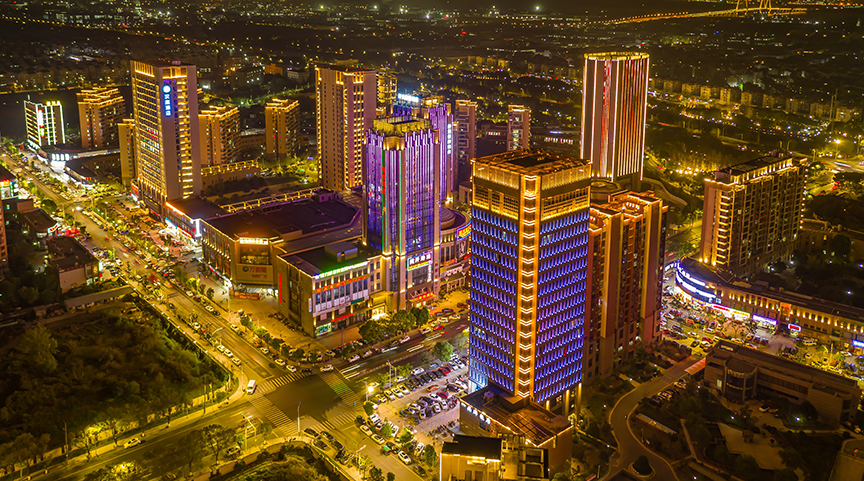
Urban Lighting Project
(2)Main Content
Building lighting: Using lights to outline the contours of buildings or carry out overall lighting for their facades to highlight the characteristics and styles of the architecture. For example, floodlights are used to illuminate the main structure of the building, and wall washer lights are employed to showcase the texture of the building's facade, enabling the building to present a unique visual effect at night.
Road lighting: It includes street lighting and the lighting of landscapes around the roads. The reasonable layout and selection of street lamps can ensure road traffic safety. Meanwhile, lighting landscape elements such as trees, flower beds, and sculptures on both sides of the road can create a comfortable and pleasant road environment.
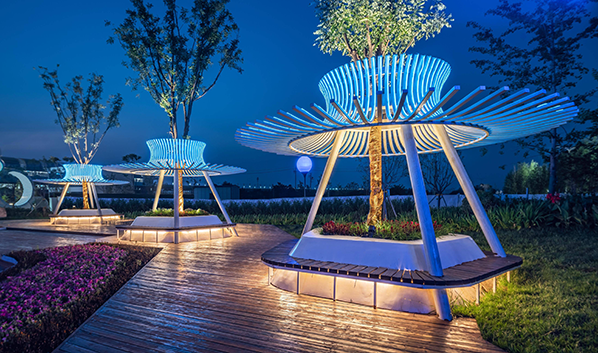
Square Lighting
Square lighting: Squares are public activity spaces in cities, and lighting designs usually combine the functions and characteristics of the square, adopting various lighting methods. For example, setting up large landscape lamp posts as the main lighting source of the square, and matching with lawn lamps, buried lights, etc. to create rich light and shadow layers, providing citizens with a good nighttime activity place.
Bridge lighting: Showcasing the structural beauty and line beauty of bridges through lighting. Lamps can be installed on bridge railings, piers, arches and other parts, and the color and dynamic changes of light can be used to make the bridge one of the important landscapes of the urban night view.
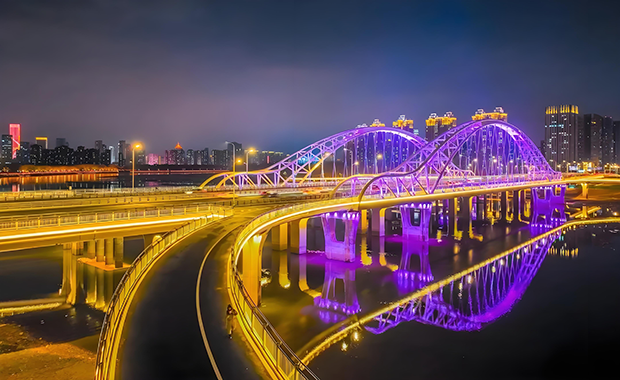
Bridge Lighting
(3)Functions and Significance
Enhancing Urban Image: Good urban lighting can create a unique urban night view, making the city glow with charming appeal at night, and enhancing the city's popularity and reputation.
Enriching Citizens' Lives: It provides citizens with a more comfortable and safe nighttime activity environment, extends their outdoor activity time, and enriches their amateur lives. For example, bright squares and parks attract citizens to take walks, exercise, relax and engage in other activities at night.
Promoting Economic Development: Urban lighting can boost the development of commerce and tourism. Bright and bustling commercial streets can attract more consumers, increasing merchants' turnover; while beautiful night views can also attract tourists to visit, promoting the prosperity of the local tourism economy.
Reflecting Urban Culture: Integrating the historical and cultural elements of the city through lighting design to showcase the unique cultural connotations of the city, and enhancing citizens' sense of identity and belonging to the city.